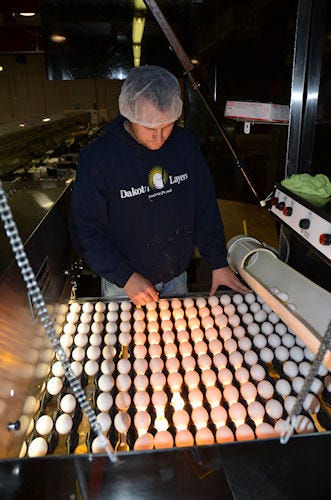January 22, 2013

A chicken eats only about one bushel of feed per year. But at Dakota Layers, Flandreau, S.D., the bushels add up quickly.
Dakota Layers expanded recently and houses 1.3 million hens. It buys about 1 million bushels of corn; more tan 10,000 tons of soybean meal; and more than 2,000 tons of distillers grains each year to feed its birds.
"It's chicken feed," quips Scott Ramsdell, Dakota Layers president and CEO and a fifth generation farmer. "But it adds up."

The Dakota Layers "Prairie Proud" logo show the pride the company takes in being about to produce eggs in South Dakota
Organized in 1999 as a cooperative to add value to members' corn and soybeans, Dakota Layers is now a limited liability partnership owned more than 100 Moody County, S.D., area farm families. Its facilities – six barns housing seven hen flocks, two manure barns and an egg processing center -- are among the most modern in the U.S. The new $4 million barn has an enrichable colony hen housing system that meets California's new animal welfare standards.
Dakota Layers recently purchased two distribution centers in California so that it can sell directly to West Coast buyers. One of the distributors it purchased -- Rosemary Farms -- is a legacy brand in California and Dakota Layers has expanded into high-value direct marketing of eggs to consumers and retailers.It washes, packs and chills about 85,000 dozen eggs per day and sells 30 million dozen eggs per year throughout the United States. It also sells enough composted chicken litter as fertilizer to cover 8,000 acres.

Chris Wiese, Dakota Layers quality control manager, candles eggs to spot defects as they enter the processing center.
Dakota Layers is working to generate electricity from the litter the additional birds in the new barn will produce. It is mixing the dry litter with wetter manure from a nearby dairy and running it through a manure digester. Dakota Layers hopes to capture the methane and use it to produce electricity for its barns. Some of the power may be sold to go back on the electrical grid.
You May Also Like




